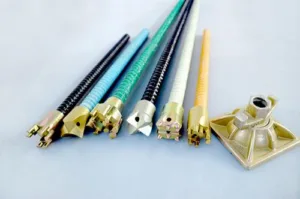In the world of construction and renovation, materials that combine strength, durability, and versatility are paramount. One such material that has gained significant traction in recent years is Fiberglass Rebar, also known as FRP (Fiberglass Reinforced Plastic) Rebar. This comprehensive guide is aimed at both contractors and homeowners, providing insights into the benefits, applications, purchasing considerations, and more about Fiberglass Rebar.

buy fiberglass rebar
1. Introduction to Fiberglass Rebar
Fiberglass Rebar is a composite material consisting of high-strength fiberglass strands embedded in a polymer matrix. This construction material offers a compelling alternative to traditional steel rebar due to its corrosion resistance, lightweight nature, and impressive tensile strength.
2. Advantages of Fiberglass Rebar
Fiberglass Rebar offers several advantages, such as being rust-free, which eliminates the risk of corrosion-related structural damage. It’s also significantly lighter than steel rebar, making transportation and installation easier.
3. Applications of Fiberglass Rebar
Fiberglass Rebar finds its utility in various applications, including infrastructure projects like bridges, highways, and tunnels, where corrosion resistance is crucial. It’s also employed in marine structures, parking decks, and even residential projects.
4. Choosing the Right Fiberglass Rebar
Selecting the appropriate type of Fiberglass Rebar depends on factors like project specifications, load requirements, and environmental conditions. Understanding the various types available and their corresponding strengths is essential.
5. Purchasing Process and Considerations
When buying Fiberglass Rebar, it’s crucial to partner with a reputable supplier like Unicomposite. Consider factors like the supplier’s experience, certifications, and product quality before making a purchase.
6. Installation Guidelines for Fiberglass Rebar
Proper installation techniques are vital to ensure the structural integrity of a project involving Fiberglass Rebar. Contractors and homeowners should adhere to recommended guidelines to achieve optimal results.
7. Maintenance and Longevity
Fiberglass Rebar’s resistance to corrosion means that structures reinforced with it require less maintenance over time. Understanding the minimal maintenance practices needed can extend the life of the construction.
8. Comparing Fiberglass Rebar with Traditional Steel Rebar
A comparative analysis between Fiberglass Rebar and traditional steel rebar delves into factors like strength, cost, and longevity, providing a clear understanding of when each material is most suitable.
9. Cost Analysis: Fiberglass Rebar vs. Steel Rebar
While the upfront cost of Fiberglass Rebar might be higher than steel rebar, factoring in its long-term benefits and reduced maintenance costs often makes it a cost-effective choice in the long run.
10. Environmental Impact and Sustainability
Fiberglass Rebar’s sustainable properties, including its longevity and reduced need for maintenance, contribute to a lower environmental impact compared to steel rebar. This section explores the ecological benefits of choosing FRP.
Conclusion: In the dynamic realm of construction materials, Fiberglass Rebar stands out as a reliable, durable, and eco-friendly option for both contractors and homeowners. Its corrosion resistance, lightweight nature, and longevity make it an appealing choice for a wide range of projects. By following the guidelines in this guide, you can confidently explore the benefits of Fiberglass Rebar and make informed decisions for your construction endeavors.
 info@unicomposite.com
info@unicomposite.com


























